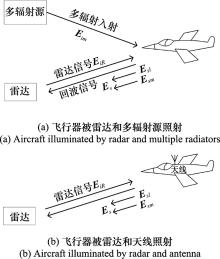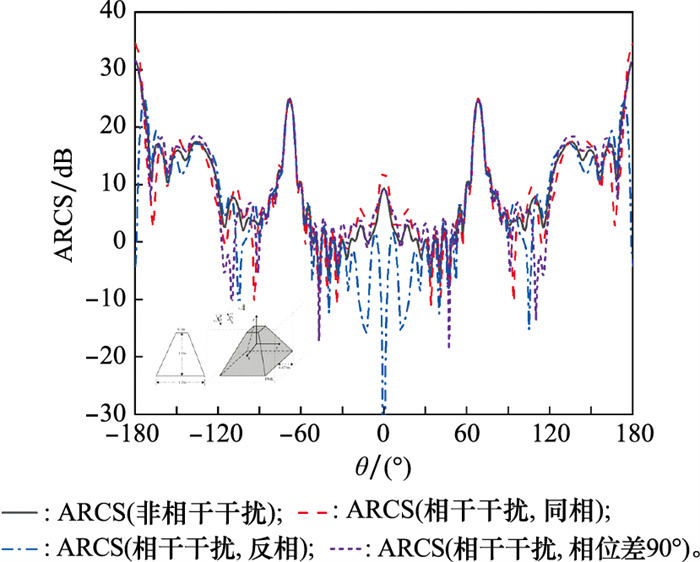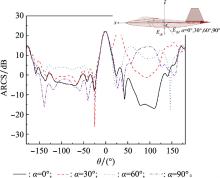| 1 |
鲁耀兵, 高红卫, 周宝亮. 分布式孔径相参合成雷达技术[J]. 雷达学报, 2017, 6 (1): 55- 64.
|
|
LU Y B , GAO H W , ZHOU B L . Distributed aperture cohe-rence-synthetic radar technology[J]. Journal of Radars, 2017, 6 (1): 55- 64.
|
| 2 |
HU C , LI W D , WANG R , et al. Discrimination of parallel and perpendicular insects based on relative phase of scattering matrix eigenvalues[J]. IEEE Trans.on Geoscience and Remote Sensing, 2020, 58 (6): 3927- 3940.
doi: 10.1109/TGRS.2019.2959622
|
| 3 |
HACKETT E E , FULLERTON A M , MERRILL C F , et al. Comparison of incoherent and coherent wave field measurements using dual-polarized pulse-Doppler X-band radar[J]. IEEE Trans.on Geoscience and Remote Sensing, 2015, 53 (11): 5925- 5942.
|
| 4 |
YU H L , LIU N , ZHANG L R , et al. An interference suppression method for multistatic radar based on noise subspace projection[J]. IEEE Sensors Journal, 2020, 20 (15): 8797- 8805.
doi: 10.1109/JSEN.2020.2984389
|
| 5 |
HOU Y D , WEN B Y , WANG C J , et al. Numerical and expe-rimental study on backscattering Doppler characteristics from 2-D nonlinear sealike surface at low grazing angle[J]. IEEE Trans.on Antennas and Propagation, 2020, 68 (2): 1055- 1065.
doi: 10.1109/TAP.2019.2943431
|
| 6 |
EBENEZER S P , PAPANDREOU-SPPAPPOLA A . Low RCS target tracking in estimated rapidly varying sea clutter using a kronecker product approximation algorithm[J]. IEEE Journal of Selected Topics in Signal Processing, 2015, 9 (8): 1639- 1649.
doi: 10.1109/JSTSP.2015.2475699
|
| 7 |
BROOKNER E. Phased-array and radar astounding breakthrough-san update[C]//Proc. of the IEEE Radar Conference, 2008.
|
| 8 |
WU Q H , LIU J , WANG J J , et al. Improved active echo cancellation against synthetic aperture radar based on nonperiodic interrupted sampling modulation[J]. IEEE Sensors Journal, 2018, 18 (11): 4453- 4461.
doi: 10.1109/JSEN.2018.2824351
|
| 9 |
SEMENIKHIN A I, SEMENIKHINA D, YUKHANOV Y, et al. Active cancellation of bistatic scattering of large aircraft using conformal 4-port magnetic antenna[C]//Proc. of the 12th European Conference on Antennas and Propagation, 2018.
|
| 10 |
CHENG Y F , FENG J , LIAO C , et al. Analysis and design of wideband low-RCS wide-scan phased array with AMC ground[J]. IEEE Antennas and Wireless Propagation Letters, 2021, 20 (2): 209- 213.
doi: 10.1109/LAWP.2020.3044533
|
| 11 |
SEMENIKHIN A I, CHERNOKOLPAKOV A I. Active cancellation of radar cross section of large aircraft using conformal 2-port magnetic T-shaped antenna[C]//Proc. of the Radiation and Scattering of Electromagnetic Waves, 2017: 181-184.
|
| 12 |
TAFLOVE A , UMASHANKAR K . Radar cross section of general three-dimensional scatterers[J]. IEEE Trans.on Electromagnetic Compatibility, 1983, 25 (4): 433- 440.
|
| 13 |
STRYDOM W J , BOTHA M M . Charge recovery for the RWG-based method of moments[J]. IEEE Antennas and Wireless Propagation Letters, 2014, 14, 305- 308.
|
| 14 |
CATEDRA M F , DELGADO C , DIEGO I G . New physical optics approach for an efficient treatment of multiple bounces in curved bodies defined by an impedance boundary condition[J]. IEEE Trans.on Antennas and Propagation, 2008, 56 (3): 728- 736.
doi: 10.1109/TAP.2008.916938
|
| 15 |
NIU L Q , XIE Y J , JIANG H L , et al. Exponential time differencing based efficient SC-PML for RCS simulation[J]. Journal of Systems Engineering and Electronics, 2020, 31 (4): 703- 711.
doi: 10.23919/JSEE.2020.000045
|
| 16 |
LI X F , XIE Y J , WANG P , et al. High-frequency method for scattering from electrically large conductive targets in half space[J]. IEEE Antennas and Wireless Propagation Letters, 2007, 6, 259- 262.
doi: 10.1109/LAWP.2007.897509
|
| 17 |
LI X F , XIE Y J , YAN R P . High-frequency method for scattering from coated targets with electrically large sizein half space[J]. IET Microwaves Antennas and Propagation, 2009, 3, 181- 186.
doi: 10.1049/iet-map:20070287
|
| 18 |
CHEN J , FURUMOTO J . A novel approach to mitigation of radar beam weighting effect on coherent radar imaging using VHF atmospheric radar[J]. IEEE Trans.on Geoscience and Remote Sensing, 2011, 49 (8): 3059- 3070.
doi: 10.1109/TGRS.2011.2119374
|
| 19 |
FENG T T, GUO L X. EM scattering of electrically large target above sea surface with SDFSM-SBR method[C]//Proc. of the 6th Asia-Pacific Conference on Antennas and Propagation, 2017.
|
| 20 |
BENNANI Y, KHENCHAF A, COMBLET F, et al. Bistatic radar cross section of a complex target on sea surface[C]//Proc. of the IEEE International Geoscience and Remote Sensing Symposium, 2010: 2543-2546.
|
| 21 |
XIA Y Q, WU L, YANG H L, et al. Analyzing the scattering near-field from complex targets[C]//Proc. of the 4th Asia-Pacific Conference on Environmental Electromagnetics, 2006: 628-631.
|
| 22 |
ZUK J , BOCQUET S , ROSENBERG L . New saddle-point technique for non-coherent radar detection with application to correlated targets in uncorrelated clutter speckle[J]. IEEE Trans.on Signal Processing, 2019, 67 (8): 2221- 2233.
doi: 10.1109/TSP.2019.2903022
|
| 23 |
AMIR M M H, MARESCA S, SERAFINO G, et al. Target RCS modeling and CFAR detection performance with photo-nics-based distributed multi-band MIMO radars[C]//Proc. of the 21st International Radar Symposium, 2021.
|
| 24 |
LIN C F, HUANG C L, SU Y. A coherent signal processing method for distributed radar system[C]//Proc. of the Progress in Electromagnetic Research Symposium, 2016: 2226-2230.
|
| 25 |
BAYAT S, EMADI M, MOUSAVI M R, et al. Fast and high-resolution PCL radar detection in noisy environment[C]//Proc. of the International Radar Symposium, 2006.
|
| 26 |
LANE T L, SCHEER J A. Fiber optic line phase noise and drift effects on bistatic imaging radar performance[C]//Proc. of the IEEE National Aerospace and Electronics Conference, 1996: 648-654.
|
| 27 |
CHIZEVER H M , COLLINS P , HAVRILLA M . Permittivity estimates of dielectric spheres using radar scattering measurements[J]. IEEE Sensors Letters, 2021, 5 (8): 1- 4.
|
| 28 |
AMIR M M H, MARESCA S, SERAFINO G, et al. Target RCS modeling and CFAR detection performance with photo-nics-based distributed multi-band MIMO radars[C]//Proc. of the 21st International Radar Symposium, 2021.
|
| 29 |
WEISSGERBER F, COLIN-KOENIGUER E, TROUVE N. Modeling of the impact of the soil roughness on PolSAR images[C]//Proc. of the 13th European Conference on Synthetic Aperture Radar, 2021.
|
| 30 |
BAUMGARTNER S V, JOSHI S K. Onboard processing concept for maritime surveillance demonstrated with DLR's airborne radar sensors F-SAR and DBFSAR[C]//Proc. of the 13th European Conference on Synthetic Aperture Radar, 2021.
|
| 31 |
MARCUS S W . Bistatic RCS of spherical chaff clouds[J]. IEEE Trans.on Antennas and Propagation, 2015, 63 (9): 4091- 4099.
doi: 10.1109/TAP.2015.2452963
|
| 32 |
NIU L Q , XIE Y J , WU P Y , et al. ARCS: active radar cross section for multi-radiator problems in complex EM environments[J]. Sensors, 2020, 20 (12): 3371.
doi: 10.3390/s20123371
|
| 33 |
NIU L Q , XIE Y J , GAO J , et al. Multi-radiators on active scattering characteristics for metal sphere model[J]. AIP Advances, 2020, 10, 125018.
doi: 10.1063/5.0033621
|
| 34 |
GAO J , XIE Y J , YU H , et al. Characteristics of half-space electromagnetic scattering with multiple radiators[J]. AIP Advances, 2021, 11, 045020.
doi: 10.1063/5.0048499
|
| 35 |
GAO S D, XIE Y J, GAO J, et al. Multi-radiators scattering cha-racteristic solver via ARCS theory and GPU acceleration[C]//Proc. of the PhotonIcs & Electromagnetics Research Symposim, 2021.
|









